
7 interesting facts about lemurs
Posted on: 9 October, 2025
With their wide eyes, fluffy tails, and curious behaviour, lemurs are some of the most captivating animals on Earth, but there’s so much more to these primates than meets the eye.
Found only in a single corner of the world, lemurs are full of surprises, from running matriarchal societies to playing a crucial role in keeping Madagascar’s forests alive.
We care for four species of lemur at Bristol Zoo Project. Here are 7 interesting facts about this eye-catching species.
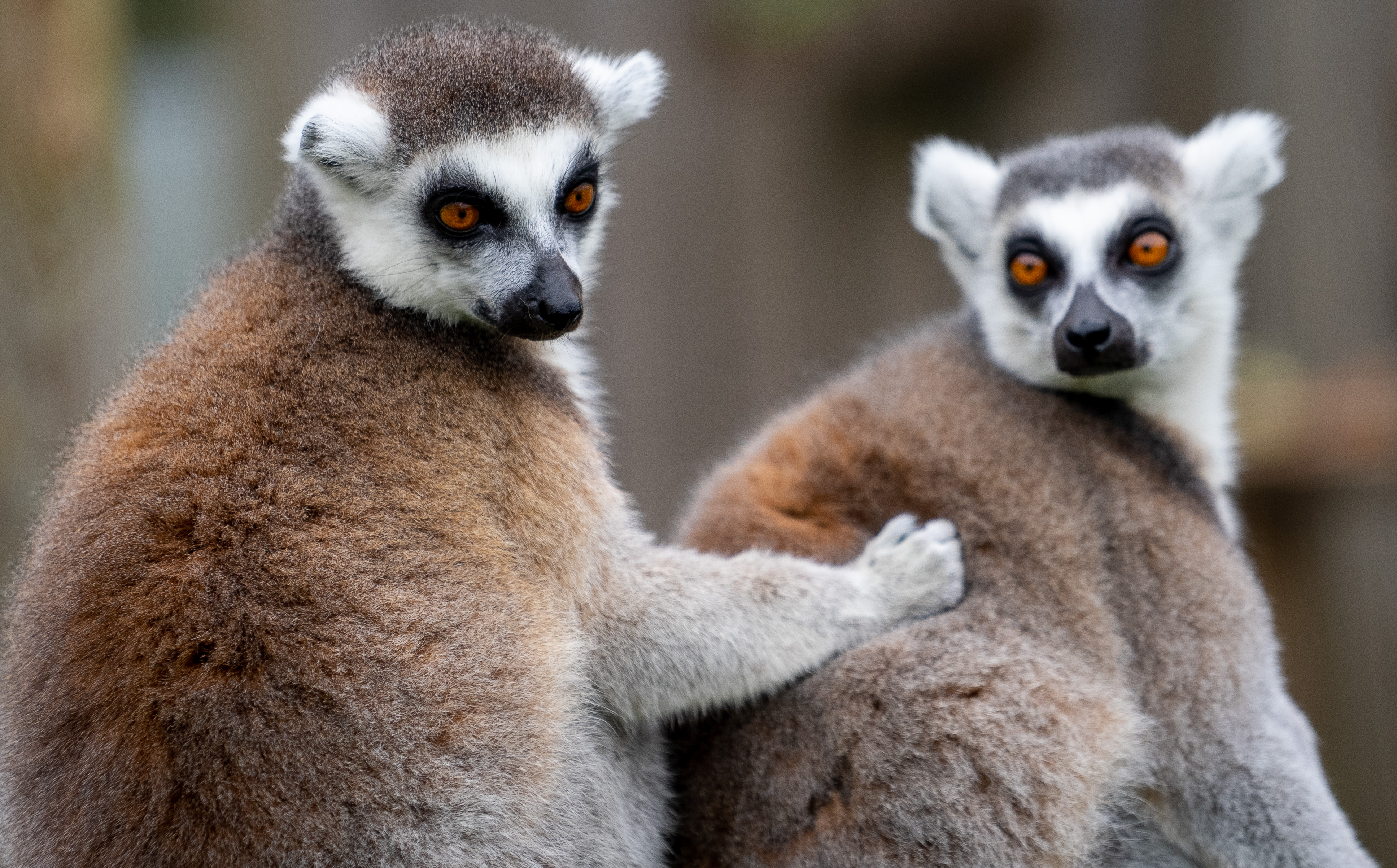 Photo credit: John England
Photo credit: John England
1. Lemurs are naturally found nowhere else in the wild but Madagascar
The world’s fourth-largest island, it is located about 250 miles off the east coast of Africa and is one of the world’s most important biodiversity hotspots.
Over millions of years of isolation, Madagascar’s wildlife has evolved in incredible ways, and lemurs are no exception. Having evolved from an African primate ancestor, strepsirrhines, an early lineage in primate evolution that split off from monkeys, apes and humans, it is thought that lemurs floated to Madagascar 50-60 million years ago on rafts of vegetation and spread rapidly. Here, they were able to adapt to different habitats and evolve into many different species, due to a lack of predators on the island.
While a couple of species, like the brown and mongoose lemurs, were later introduced to nearby Comoros Islands by humans, true wild lemurs are endemic to Madagascar, but are now under threat due to human reliance on forest resources that can lead to habitat loss, population fragmentation, and hunting pressure.
At Bristol Zoological Society we work with local communities and partners, such as the AEECL (Lemur Conservation Association) to monitor wildlife, as well as protect and restore habitats in Sahamalaza Iles Radama National Park, in the north-west of the island.
2. There are over 100 species of lemur, in all shapes and sizes
With an estimated 112 species, lemurs come in a variety of shapes and sizes. The smallest, Madame Berthe’s mouse lemur, has an average body weight of 30g, and the largest, the indri, weighs about 6-9.5kg, similar to that of a watermelon. The number of lemur species is ever-changing due to new discoveries and genetic testing, and the newest species, Jonah's mouse lemur, was discovered in 2020.
The indri is the largest of the living lemurs; however, subfossil records show an extinct giant lemur that belonged to the “sloth lemur” family, which was thought to be the size of a male gorilla, weighing in at around 85kg.
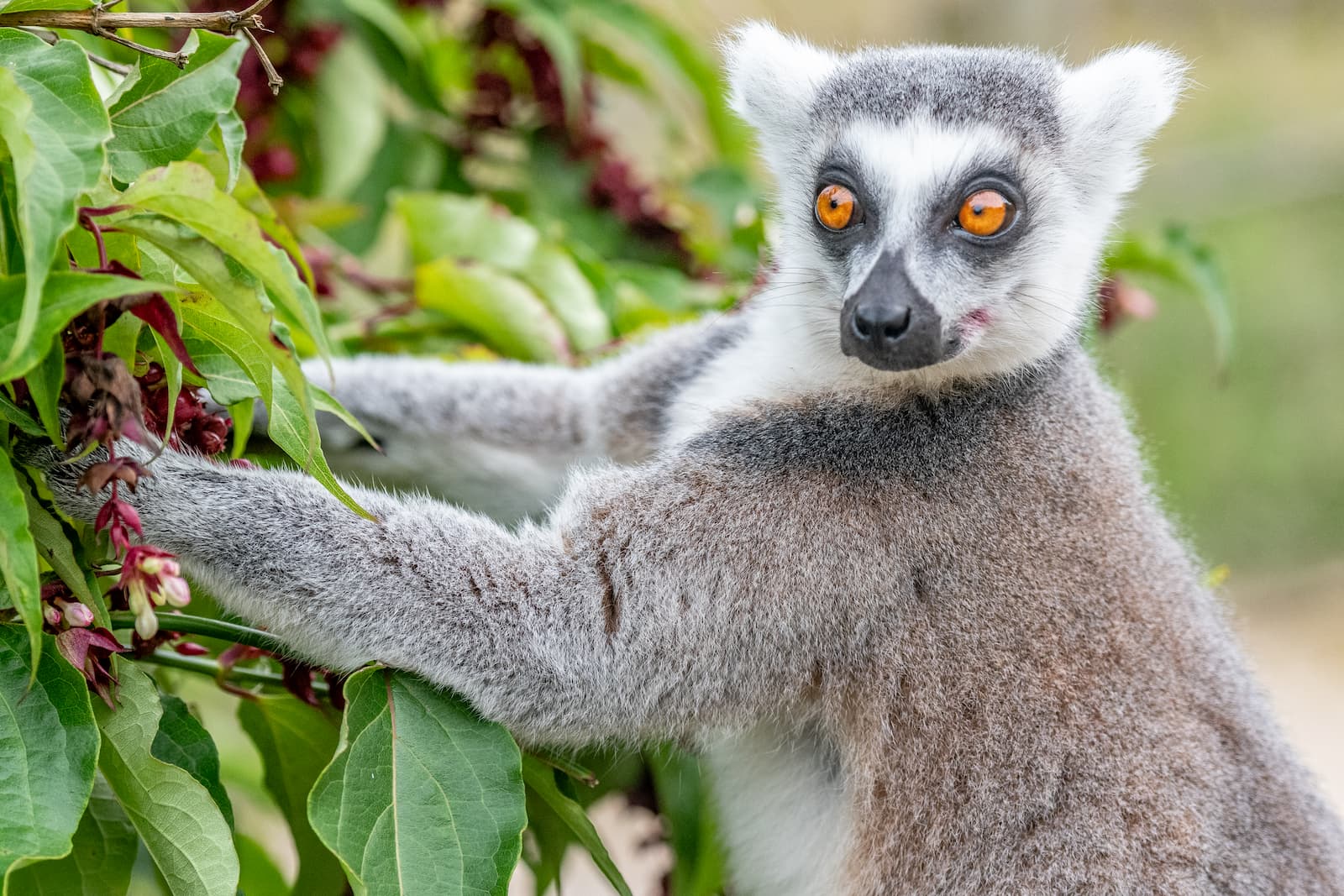 Photo credit: Hanna Brunt
Photo credit: Hanna Brunt
3. Lemurs are the world’s oldest living primates
The story of lemurs dates back over 70 million years, to a time when early lemur-like creatures shared the planet with dinosaurs in ancient Africa. It is believed these early primates made an incredible journey across the Indian Ocean to Madagascar and evolved in relative isolation to become the wide variety of species that we see today.
Sadly, while lemurs are a living link to our planet’s fascinating and deep evolutionary past, they’re also the world’s most endangered primates, with nearly every species now facing the threat of extinction.
4. Lemur societies are run by a females
Though rare among mammals, most females in lemur society display social dominance over males.
A majority of lemur species live in matriarchal societies, where females take the lead in almost every aspect of group life. They control access to food, choose mates, and often lead on foraging and group movements. Even young females can outrank fully grown males, creating a social structure that’s highly unusual among mammals and nearly unheard of in other primate species. Lemurs offer a fascinating glimpse into a female-led world, challenging many assumptions about animal behaviour and social hierarchy.
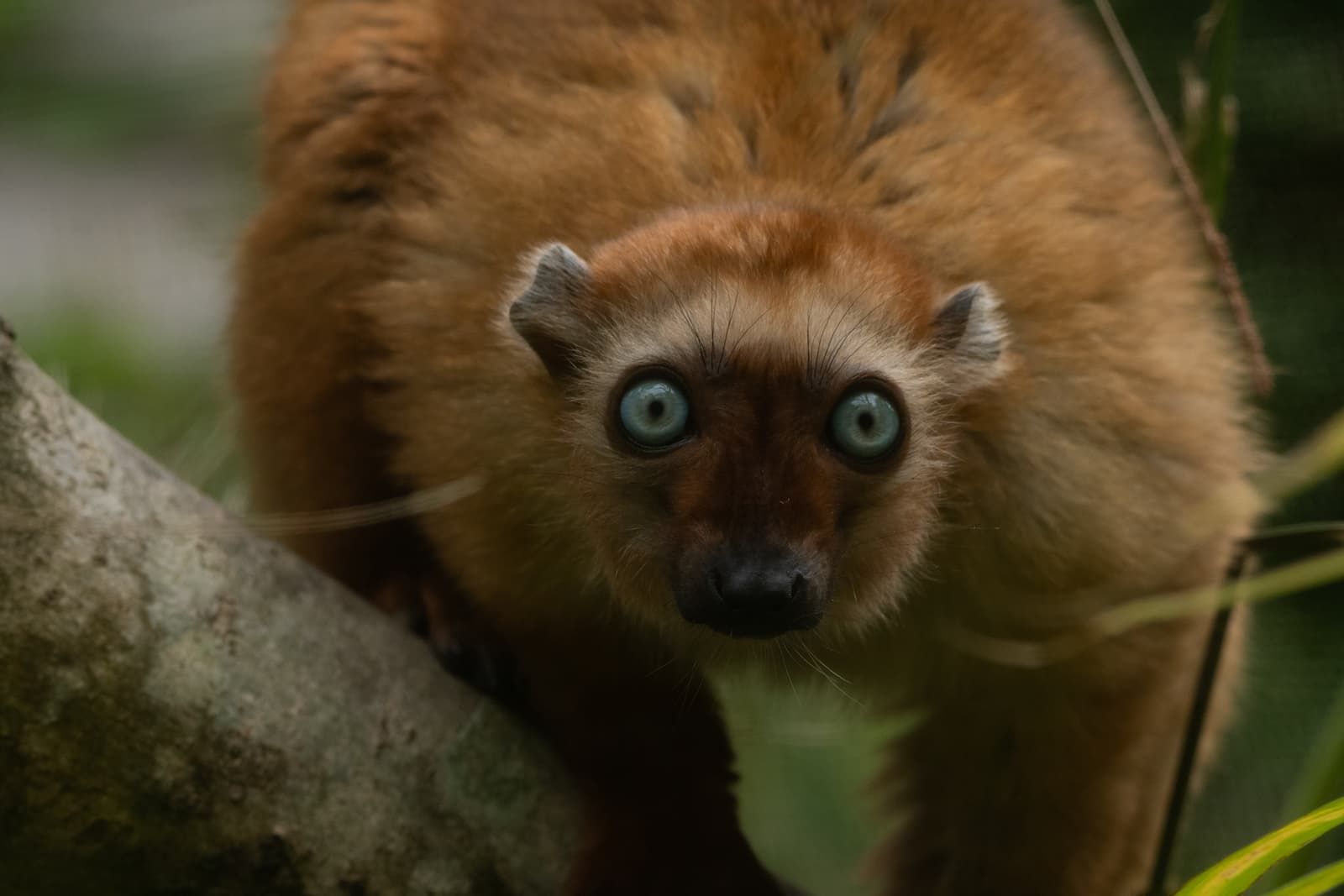 Photo credit: Katie Horrocks
Photo credit: Katie Horrocks
5. Blue-eyed black lemurs share a rare trait with humans
Blue-eyed black lemurs are one of only two primate species to naturally have blue eyes, a gentle reminder of our shared characteristics between human and non-human primates. The only other species with this striking trait is the blue-eyed spotted cuscus, found in West Papua, Indonesia.
This rare eye colour makes these species especially captivating, but it also makes for a troubling reality as both are critically endangered. There has been an 80% decline in the population of blue-eyed spotted cuscus in the last ten years due to habitat loss and hunting, as well as exploitation as part of the exotic pet trade. For the blue-eyed black lemur, habitat loss and hunting in Madagascar have pushed them to the brink, making conservation efforts more urgent than ever to preserve these unique and rare-eyed creatures.
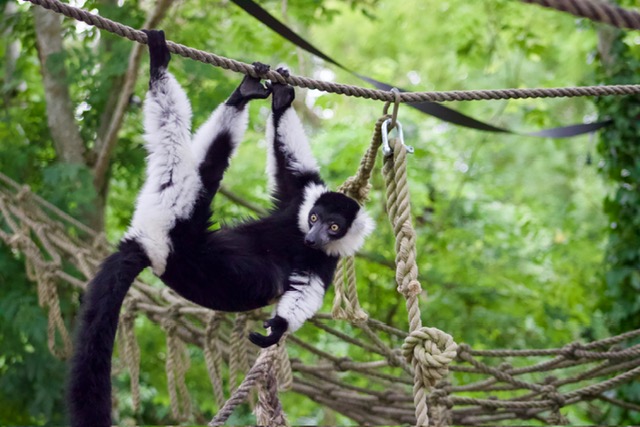 Photo credit: Amy Rudge
Photo credit: Amy Rudge
6. Ruffed Lemurs are one of the world’s largest pollinators
Who would have guessed that ruffed lemurs hold a unique and vital role in Madagascar’s ecosystems as one of the world’s largest pollinators?
Feeding on nectar and fruit from tropical plants like the traveller’s palm, pollen collects on their furry noses and bodies and is transferred from flower to flower. In fact, the traveller’s palm relies almost entirely on ruffed lemurs for pollination.
These lemurs are also crucial seed dispersers. By consuming fruits and later excreting the seeds in different locations, they help regenerate and spread the forest. Some seeds even hitch a ride on their fur. Thanks to this role, ruffed lemurs are often called the “creators of the forest,” helping maintain the biodiversity, structure, and health of Madagascar’s unique and fragile forests.
At Bristol Zoo Project we care for a conspiracy of belted black and white ruffed lemurs.
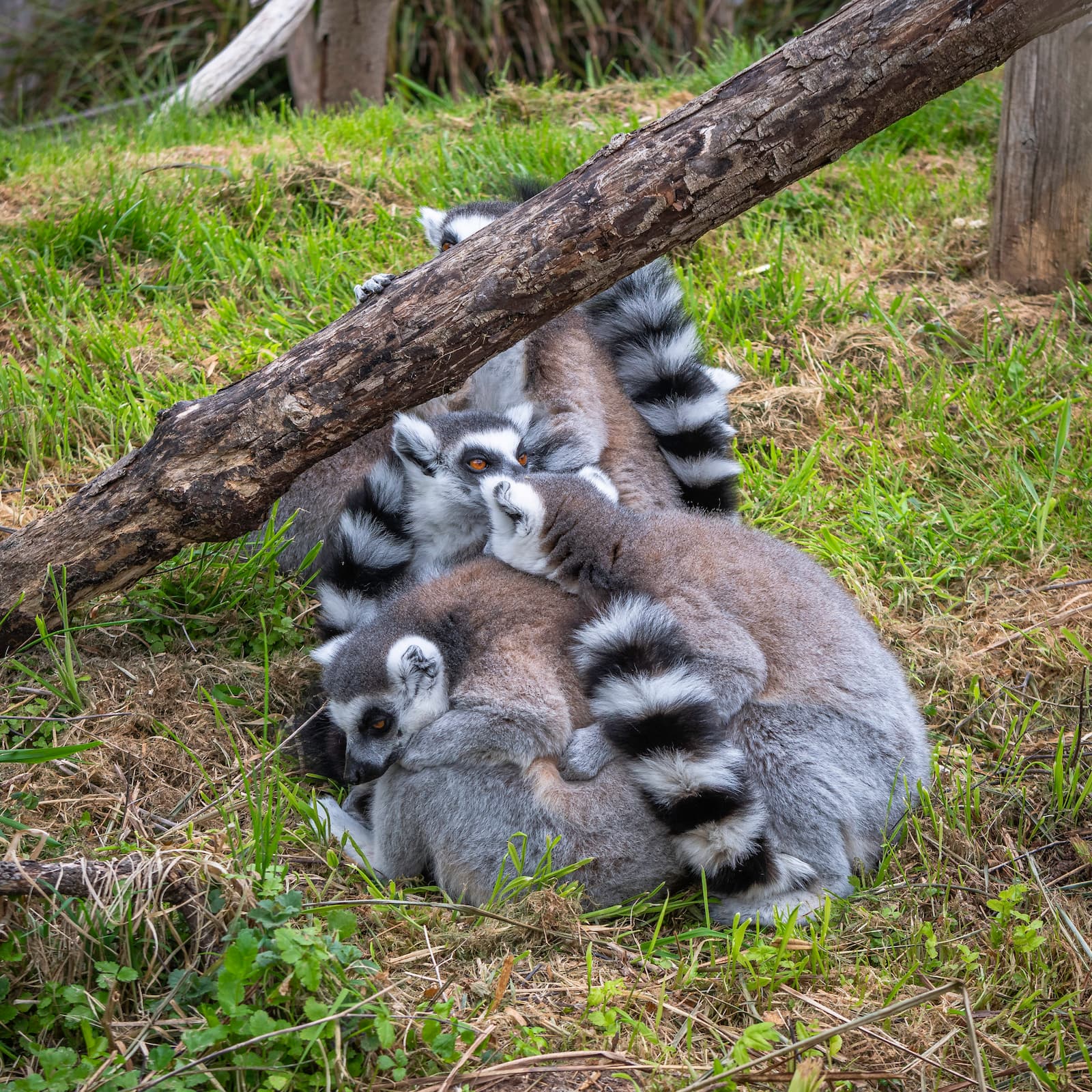 Photo credit: Doug Lodge
Photo credit: Doug Lodge
7. Master communicators and social butterflies
Lemurs use a combination of sight, sound, and smell to communicate, which facilitates their innate ability to socialise in large groups.
Ring-tailed lemurs are not only the most recognizable lemur species, thanks in part to King Julien from the Madagascar movies, but also some of the most socially complex, living in larger troops of up to 30, which is larger than other species. These intelligent primates have a sophisticated communication system that includes scent marking, visual signals, vocal calls, and even tail gestures. During group travel, they hold their distinctive black-and-white tails high like flags to help keep the troop together.
Scent plays a big role too, with males engaging in "stink fights" by rubbing scent glands from their bottoms onto their tails and waving them at rivals. Beyond communication, they huddle together at night for warmth and to strengthen social bonds. They also spend a surprising amount of time on the ground, more than any other lemur species, and are often seen sunbathing in the mornings, sitting with arms outstretched like mini yogis warming up for the day.
With tails longer than their bodies and a lifespan of up to 15 years in the wild, these lemurs are as fascinating as they are charismatic.
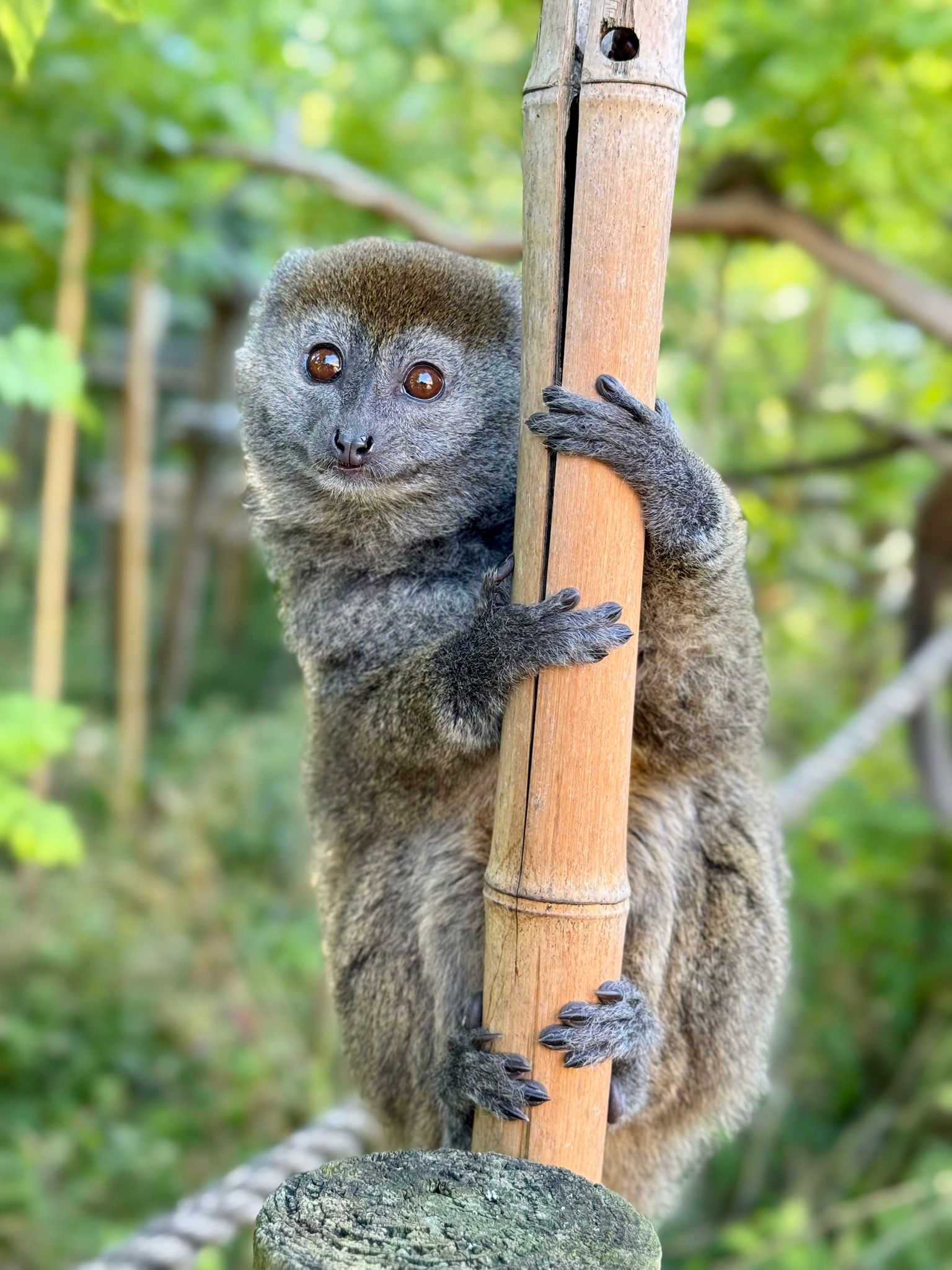 Photo credit: Corey Hawkins
Photo credit: Corey Hawkins
Find out more about our conservation work in Madagascar.
You can visit our four species of lemur at Bristol Zoo Project, Alaotran gentle, belted black-and-white ruffed, blue-eyed black and ring-tailed, who live alongside each other in our ‘Discover Madagascar’ Lemur Walkthrough.
Bristol Zoo Project is run by Bristol Zoological Society, a conservation and education charity. Every visit supports our mission to protect nature now and into the future here in the UK and around the world.

